New research by film data expert Stephen Follows uses subtitle data from OpenSubtitles to explore how often films include the phrase “I love you” and how characters respond when they hear it.
Drawing on over 72,000 English-language subtitle files from fiction feature films made between 1911 and 2022, the analysis reveals patterns in cinematic declarations of love across genres and decades.
How often do movies say I love you
Just over half of all movies do not include the phrase “I love you” at all. Among those that do, most use it sparingly. 17.2 percent of films use the phrase exactly once, with diminishing numbers as the count increases. Fewer than five uses is the norm.
One outlier was a 1986 French-Italian film titled I Love You, which contains the phrase 74 times. The line is delivered mostly by a bobble-head doll, repeating it throughout the film.
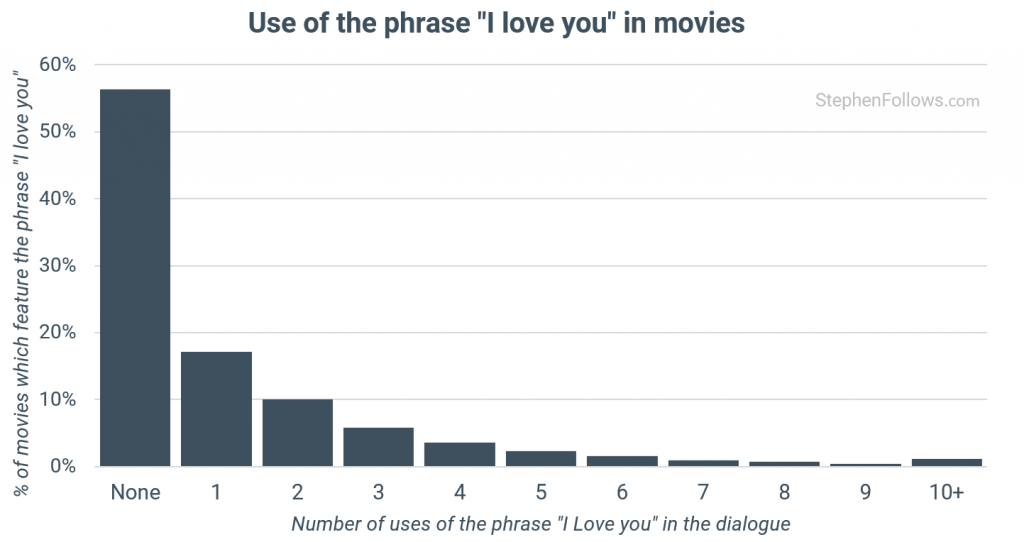
Changes over time
The popularity of the phrase has fluctuated across the decades. Its usage was relatively high until the 1960s before falling in subsequent years. A partial resurgence took place during the 1980s and 1990s, followed by a dip in the early 2000s.
Since around 2014, there has been a notable increase in the number of films using the phrase. The latest figures show that more than half of all recent films now include at least one instance of “I love you”.
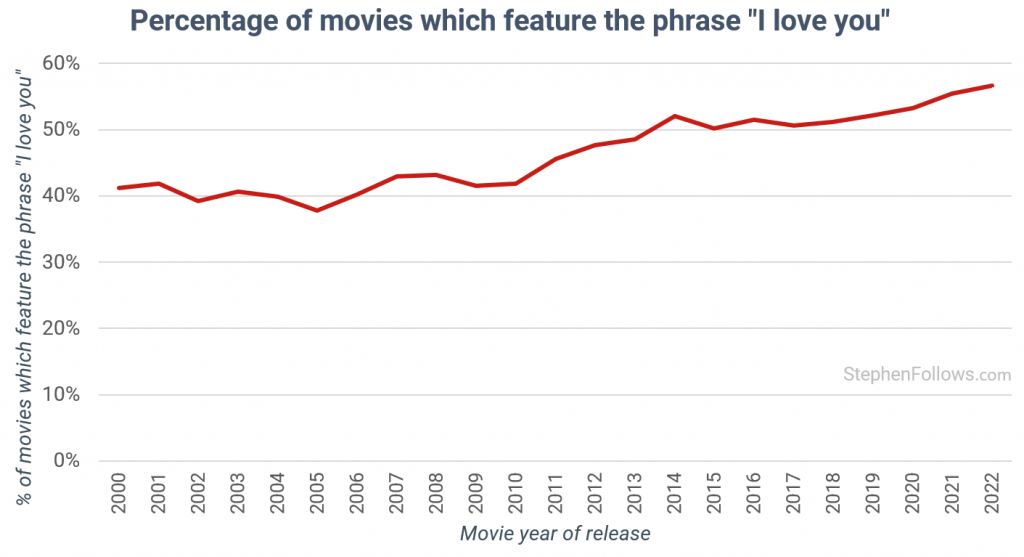

Where in the film it appears
The timing of the phrase within films is also consistent. Few declarations of love occur early in the story. Instead, usage gradually increases over time, peaking in the final minutes. Around a quarter of all uses take place in the last 15 percent of a movie, suggesting that it functions as an emotional resolution or payoff.
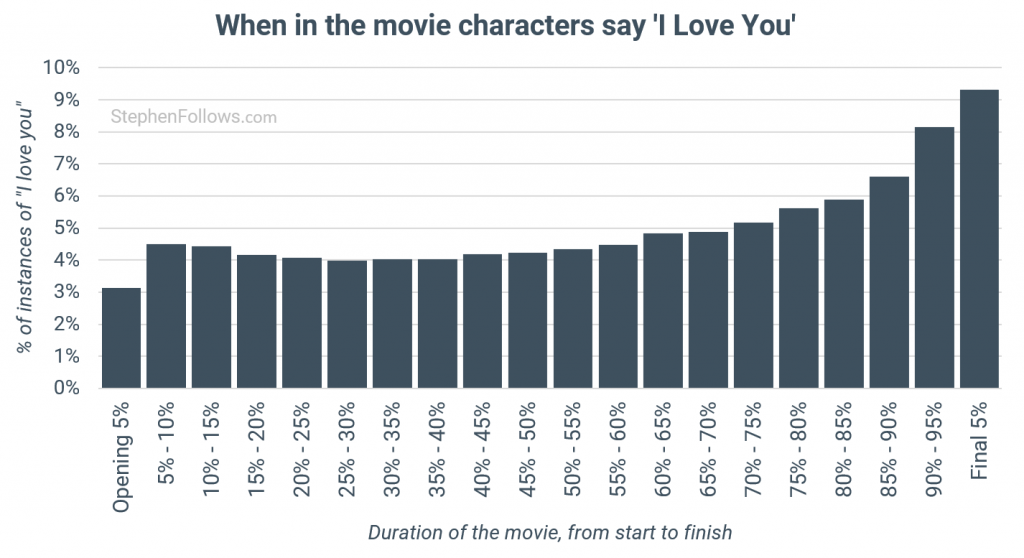

How characters respond
Reactions to the phrase vary, but the most common responses fall into four categories: acceptance, deflection or ignoring, comedic reaction, and outright rejection.
Historically, deflection or ignoring has been the most frequent response.
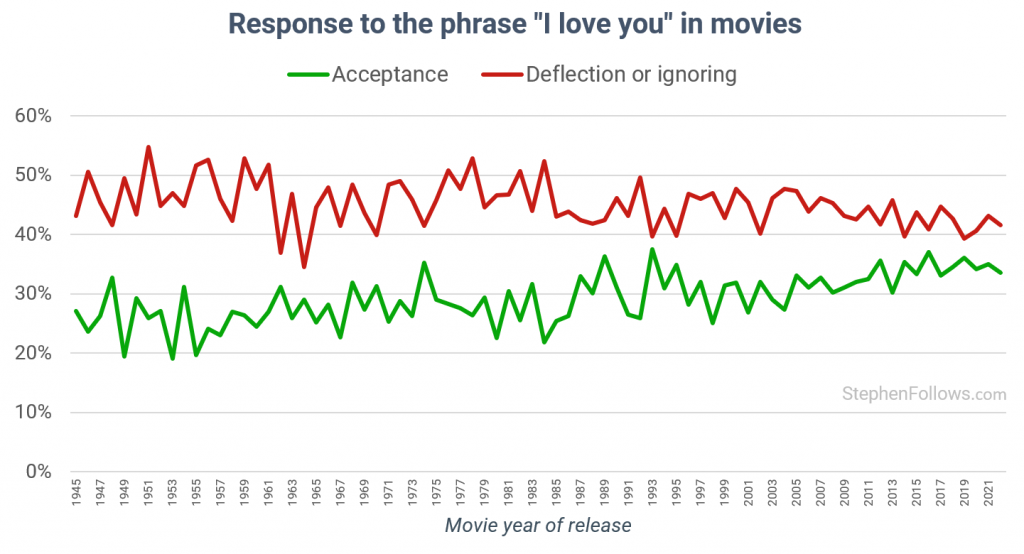

Early in a story, responses are more uncertain or evasive. As the narrative progresses, acceptance becomes more common and eventually overtakes other reactions. Rejections are more likely to occur two-thirds of the way through a film, while comedic responses remain relatively steady throughout. By the final scenes, outright rejections fall sharply.
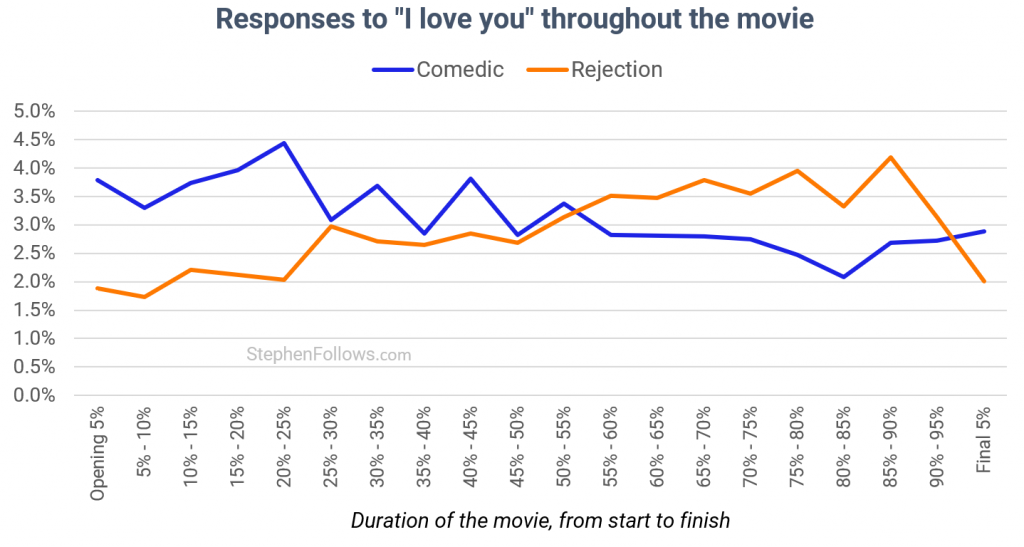

Which genres say it most
Genre plays a significant role in how often the phrase appears. Romance films are the most likely to include “I love you”, with 57 percent using the phrase at least once. Music and comedy films also feature it frequently.
On the other end of the spectrum, Westerns, history films, and war films are the least likely to include the phrase, with fewer than a third doing so.
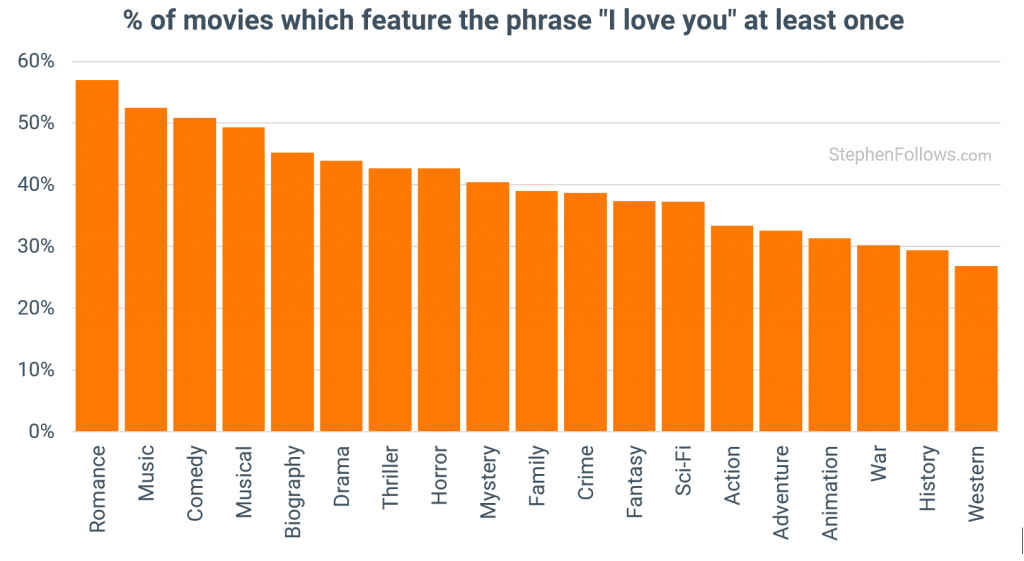

Data sources
This analysis is based on English-language subtitle files for 72,405 fiction feature films provided by OpenSubtitles. Additional metadata came from OMDb, IMDb, The Numbers, Wikipedia, and independent classification.
The use of subtitle data from OpenSubtitles allows for large-scale exploration of trends in dialogue and emotional expression across a century of cinema.
You can read more from Stephen at stephenfollows.com









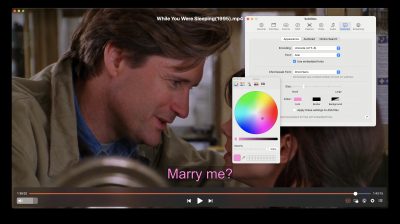

Start the discussion at forum.opensubtitles.com